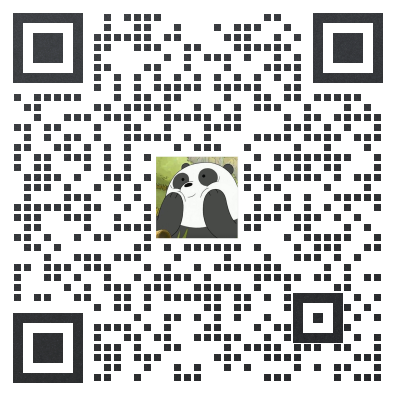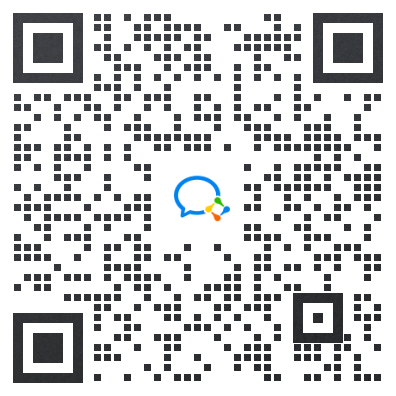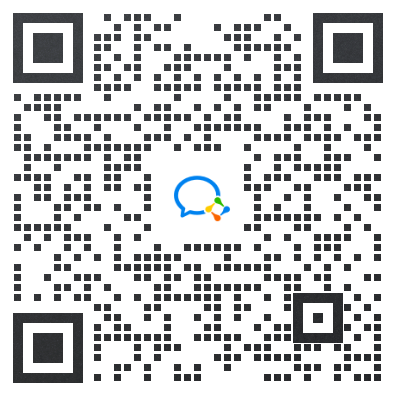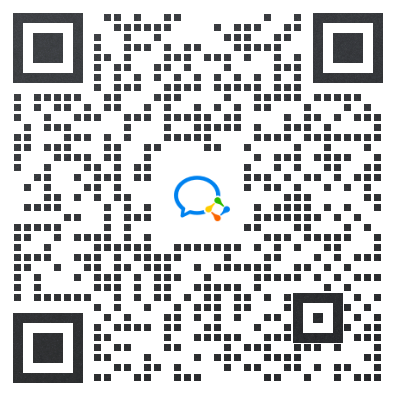Mononoke
Expressive Drone Synthesizer
开发者: Bram Bos
中国
版本统计
1429天21小时
最新版本上线距今
0
近1年版本更新次数
2020-01-17
全球最早版本上线日期
版本记录
版本: 1.2.2
版本更新日期
2021-09-17

Mononoke
Expressive Drone Synthesizer
更新日志
Minor internal fix应用描述
Mononoke is an unconventional synthesizer, designed to compose evolving soundscapes and musical textures.
Feedback routing
What sets Mononoke apart from other synths is that its voices (4 in each section) can be routed back into each other in multiple ways, creating all sorts of overtones and pulsating resonant frequencies. Sometimes harmonic, sometimes weirdly atonal. Sometimes clear and delicate as icicles, sometimes harsh as metallic blades, sometimes soft as fresh snow. This interaction between voices helps fuse all layers together into a coherent musical landscape.
A tale of two engines
The synthesizer engines (each of the two sections has its own independent engine) have relatively simple controls, which influence a complex system of many invisible, interconnected LFOs. But this is not your bread-and-butter general purpose synthesizer: think of Mononoke as one huge FM synthesizer where each voice is an independently playable operator. Together all operators contribute to a single soundscape.
Expressive pads
Complex soundscapes can be created live, using the 8 performance pads which let you modulate each voice independently in several dimensions. Your interactions with the pads will also be sent out as MPE/MIDI (when loaded as an AU plugin in a compatible host) so you can record and tweak your session. The onscreen pads can be latched individually so some voices can be used as drones, while others as can be added and removed as extra sonic layers. The pads are fully integrated in the Audio Unit plugin.
Connectivity
Mononoke is designed as an AUv3 plugin, with advanced Audio Unit features such as MPE input and output (!), a fully exposed array of AU parameters for automation and all the connectivity and scalability you can expect from modern plugins.
The standalone mode is basic (just meant for jamming and creating presets) and does not offer any connectivity, so if you want to use Mononoke in conjunction with other apps and effects you'll need to load it into a host, such as Garageband, Audiobus, AUM or Cubasis.
Summary:
- Audio Unit (AUv3) plugin
- 8 voice polyphony, 2 independent engines with 4 voices each
- Compatible with MPE (MIDI Polyphonic Expression) and MIDI
- MIDI Input and Output (only available when used as an Audio Unit plugin)
- Limited standalone mode for jamming (full screen, no connectivity)
- 8 independently tunable performance pads for expressive interaction
- Universal, fully scalable to any screen size, supports fullscreen mode in AU hosts
- Freely tunable voices, or quantized to semitones (with overall finetuning)
- iOS10 (MIDI/MPE output from the plugin requires iOS11) or higher
Also contains Mononoke Pads: an extra AUv3 MIDI controller plugin for playing MPE compatible synths using Mononoke's pads. Note: this is a separate plugin which will be installed in your MIDI Plugin collection. Mononoke Pads requires iOS 11.版本: 1.2.1
版本更新日期
2020-03-13

Mononoke
Expressive Drone Synthesizer
更新日志
Slightly tweaked the Wavefolder effect to avoid excessive loudness peaks across the range.应用描述
Mononoke is an unconventional synthesizer, designed to compose evolving soundscapes and musical textures.
Feedback routing
What sets Mononoke apart from other synths is that its voices (4 in each section) can be routed back into each other in multiple ways, creating all sorts of overtones and pulsating resonant frequencies. Sometimes harmonic, sometimes weirdly atonal. Sometimes clear and delicate as icicles, sometimes harsh as metallic blades, sometimes soft as fresh snow. This interaction between voices helps fuse all layers together into a coherent musical landscape.
A tale of two engines
The synthesizer engines (each of the two sections has its own independent engine) have relatively simple controls, which influence a complex system of many invisible, interconnected LFOs. But this is not your bread-and-butter general purpose synthesizer: think of Mononoke as one huge FM synthesizer where each voice is an independently playable operator. Together all operators contribute to a single soundscape.
Expressive pads
Complex soundscapes can be created live, using the 8 performance pads which let you modulate each voice independently in several dimensions. Your interactions with the pads will also be sent out as MPE/MIDI (when loaded as an AU plugin in a compatible host) so you can record and tweak your session. The onscreen pads can be latched individually so some voices can be used as drones, while others as can be added and removed as extra sonic layers. The pads are fully integrated in the Audio Unit plugin.
Connectivity
Mononoke is designed as an AUv3 plugin, with advanced Audio Unit features such as MPE input and output (!), a fully exposed array of AU parameters for automation and all the connectivity and scalability you can expect from modern plugins.
The standalone mode is basic (just meant for jamming and creating presets) and does not offer any connectivity, so if you want to use Mononoke in conjunction with other apps and effects you'll need to load it into a host, such as Garageband, Audiobus, AUM or Cubasis.
Summary:
- Audio Unit (AUv3) plugin
- 8 voice polyphony, 2 independent engines with 4 voices each
- Compatible with MPE (MIDI Polyphonic Expression) and MIDI
- MIDI Input and Output (only available when used as an Audio Unit plugin)
- Limited standalone mode for jamming (full screen, no connectivity)
- 8 independently tunable performance pads for expressive interaction
- Universal, fully scalable to any screen size, supports fullscreen mode in AU hosts
- Freely tunable voices, or quantized to semitones (with overall finetuning)
- iOS10 (MIDI/MPE output from the plugin requires iOS11) or higher
Also contains Mononoke Pads: an extra AUv3 MIDI controller plugin for playing MPE compatible synths using Mononoke's pads. Note: this is a separate plugin which will be installed in your MIDI Plugin collection. Mononoke Pads requires iOS 11.版本: 1.2
版本更新日期
2020-03-10

Mononoke
Expressive Drone Synthesizer
更新日志
What's new in this Mononoke update:
- Dynamic Saw oscillator in the voice section (which can blend in and out with its own LFO)
- Sample&Hold LFO type for rhythmically randomizing your oscillator effects
- Wavefolder between the Mood and Ambiance effect units应用描述
Mononoke is an unconventional synthesizer, designed to compose evolving soundscapes and musical textures.
Feedback routing
What sets Mononoke apart from other synths is that its voices (4 in each section) can be routed back into each other in multiple ways, creating all sorts of overtones and pulsating resonant frequencies. Sometimes harmonic, sometimes weirdly atonal. Sometimes clear and delicate as icicles, sometimes harsh as metallic blades, sometimes soft as fresh snow. This interaction between voices helps fuse all layers together into a coherent musical landscape.
A tale of two engines
The synthesizer engines (each of the two sections has its own independent engine) have relatively simple controls, which influence a complex system of many invisible, interconnected LFOs. But this is not your bread-and-butter general purpose synthesizer: think of Mononoke as one huge FM synthesizer where each voice is an independently playable operator. Together all operators contribute to a single soundscape.
Expressive pads
Complex soundscapes can be created live, using the 8 performance pads which let you modulate each voice independently in several dimensions. Your interactions with the pads will also be sent out as MPE/MIDI (when loaded as an AU plugin in a compatible host) so you can record and tweak your session. The onscreen pads can be latched individually so some voices can be used as drones, while others as can be added and removed as extra sonic layers. The pads are fully integrated in the Audio Unit plugin.
Connectivity
Mononoke is designed as an AUv3 plugin, with advanced Audio Unit features such as MPE input and output (!), a fully exposed array of AU parameters for automation and all the connectivity and scalability you can expect from modern plugins.
The standalone mode is basic (just meant for jamming and creating presets) and does not offer any connectivity, so if you want to use Mononoke in conjunction with other apps and effects you'll need to load it into a host, such as Garageband, Audiobus, AUM or Cubasis.
Summary:
- Audio Unit (AUv3) plugin
- 8 voice polyphony, 2 independent engines with 4 voices each
- Compatible with MPE (MIDI Polyphonic Expression) and MIDI
- MIDI Input and Output (only available when used as an Audio Unit plugin)
- Limited standalone mode for jamming (full screen, no connectivity)
- 8 independently tunable performance pads for expressive interaction
- Universal, fully scalable to any screen size, supports fullscreen mode in AU hosts
- Freely tunable voices, or quantized to semitones (with overall finetuning)
- iOS10 (MIDI/MPE output from the plugin requires iOS11) or higher
Also contains Mononoke Pads: an extra AUv3 MIDI controller plugin for playing MPE compatible synths using Mononoke's pads. Note: this is a separate plugin which will be installed in your MIDI Plugin collection. Mononoke Pads requires iOS 11.版本: 1.1
版本更新日期
2020-01-28

Mononoke
Expressive Drone Synthesizer
更新日志
Lots of little improvements in this update:
- You can now tune the knobs to a selected scale automatically
- Selected notes are now displayed inside the tuning knobs
- UI optimizations for use on phones
Now also includes an extra MIDI AUv3 plugin: "Mononoke Pads", which lets you play other MPE synths using Mononoke's performance pads. Have fun!应用描述
Mononoke is an unconventional synthesizer, designed to compose evolving soundscapes and musical textures.
Feedback routing
What sets Mononoke apart from other synths is that its voices (4 in each section) can be routed back into each other in multiple ways, creating all sorts of overtones and pulsating resonant frequencies. Sometimes harmonic, sometimes weirdly atonal. Sometimes clear and delicate as icicles, sometimes harsh as metallic blades, sometimes soft as fresh snow. This interaction between voices helps fuse all layers together into a coherent musical landscape.
A tale of two engines
The synthesizer engines (each of the two sections has its own independent engine) have relatively simple controls, which influence a complex system of many invisible, interconnected LFOs. But this is not your bread-and-butter general purpose synthesizer: think of Mononoke as one huge FM synthesizer where each voice is an independently playable operator. Together all operators contribute to a single soundscape.
Expressive pads
Complex soundscapes can be created live, using the 8 performance pads which let you modulate each voice independently in several dimensions. Your interactions with the pads will also be sent out as MPE/MIDI (when loaded as an AU plugin in a compatible host) so you can record and tweak your session. The onscreen pads can be latched individually so some voices can be used as drones, while others as can be added and removed as extra sonic layers. The pads are fully integrated in the Audio Unit plugin.
Connectivity
Mononoke is designed as an AUv3 plugin, with advanced Audio Unit features such as MPE input and output (!), a fully exposed array of AU parameters for automation and all the connectivity and scalability you can expect from modern plugins.
The standalone mode is basic (just meant for jamming and creating presets) and does not offer any connectivity, so if you want to use Mononoke in conjunction with other apps and effects you'll need to load it into a host, such as Garageband, Audiobus, AUM or Cubasis.
Summary:
- Audio Unit (AUv3) plugin
- 8 voice polyphony, 2 independent engines with 4 voices each
- Compatible with MPE (MIDI Polyphonic Expression) and MIDI
- MIDI Input and Output (only available when used as an Audio Unit plugin)
- Limited standalone mode for jamming (full screen, no connectivity)
- 8 independently tunable performance pads for expressive interaction
- Universal, fully scalable to any screen size, supports fullscreen mode in AU hosts
- Freely tunable voices, or quantized to semitones (with overall finetuning)
- iOS10 (MIDI/MPE output from the plugin requires iOS11) or higher
Also contains Mononoke Pads: an extra AUv3 MIDI controller plugin for playing MPE compatible synths using Mononoke's pads. Note: this is a separate plugin which will be installed in your MIDI Plugin collection. Mononoke Pads requires iOS 11.版本: 1.0.2
版本更新日期
2020-01-19

Mononoke
Expressive Drone Synthesizer
更新日志
- MPE Pitch Bend range is now +/- 24 semitones... bend away!
- Optimized MOOD effect
- Changed default settings when starting the app
- Display of free tuning is now correct in the LCD
- Disabled legacy MIDI CC control on channel 1*
* it is recommended to automate synth settings using AU Parameters. In case you want to change settings using the legacy CC method, make sure you send these controls on channels 2-16. This is to keep channel 1 free for hardware MIDI/MPE controllers while still being able to map knobs to AU Parameters; and to avoid that Mononoke receives parameter changes twice: via AU Parameters and via direct MIDI input.
More details in the user manual on Ruismaker.com应用描述
Mononoke is an unconventional 8 voice polyphonic, 2 part multitimbral synthesizer, designed to compose evolving soundscapes and musical textures.
A tale of two engines
The synthesizer engines (each of the two sections has its own independent engine) have relatively simple controls, which influence a complex system of many invisible, interconnected LFOs. You never 'control' Mononoke, but rather steer it in a certain direction. The result is a constantly evolving sonic entity, yet with a distinct signature sound (in other words: this is not your bread-and-butter general purpose synthesizer).
Feedback routing
What sets Mononoke apart from other synths is that its voices (4 in each section) can be routed back into each other in multiple ways, creating all sorts of overtones and pulsating resonant frequencies. Sometimes harmonic, sometimes weirdly atonal. Sometimes clear and delicate as icicles, sometimes harsh as metallic blades, sometimes soft as fresh snow. This interaction between voices helps fuse all layers together into a coherent musical landscape.
Expressive pads
Complex soundscapes can be created live, using the 8 performance pads which let you modulate each voice independently in several dimensions. Your interactions with the pads will also be sent out as MPE/MIDI (when loaded as an AU plugin in a compatible host) so you can record and tweak your session. The onscreen pads can be latched individually so some voices can be used as drones, while others as can be added and removed as extra sonic layers. The pads are fully integrated in the Audio Unit plugin.
Connectivity
Mononoke is designed as an AUv3 plugin, with advanced Audio Unit features such as MPE input and output (!), a fully exposed array of AU parameters for automation and all the connectivity and scalability you can expect from modern plugins.
The standalone mode is basic (just meant for jamming and creating presets) and does not offer any connectivity, so if you want to use Mononoke in conjunction with other apps and effects you'll need to load it into a host, such as Garageband, Audiobus, AUM or Cubasis.
Summary:
- Audio Unit (AUv3) plugin
- 8 voice polyphony, 2 independent engines with 4 voices each
- Compatible with MPE (MIDI Polyphonic Expression) and MIDI
- MIDI Input and Output (only available when used as an Audio Unit plugin)
- Limited standalone mode for jamming (full screen, no connectivity)
- 8 independently tunable performance pads for expressive interaction
- Universal, fully scalable to any screen size, supports fullscreen mode in AU hosts
- Freely tunable voices, or quantized to semitones (with overall finetuning)
- iOS10 (MIDI/MPE output from the plugin requires iOS11) or higher版本: 1.0.1
版本更新日期
2020-01-18

Mononoke
Expressive Drone Synthesizer
更新日志
Thanks for your overwhelming enthusiasm and support for Mononoke!
In this quick first update I've fixed some small bugs and added some tiny features:
- when tapping the tuning knobs you now see their current tuning setting before changing them
- the LCD tuning display was off (yeah, that one was silly)
- fixed an AU parameter scaling bug
- fixed a possible issue when triggering notes in the negative octave range (notably D-1) in MIDI mode应用描述
Mononoke is an unconventional 8 voice polyphonic, 2 part multitimbral synthesizer, designed to compose evolving soundscapes and musical textures.
A tale of two engines
The synthesizer engines (each of the two sections has its own independent engine) have relatively simple controls, which influence a complex system of many invisible, interconnected LFOs. You never 'control' Mononoke, but rather steer it in a certain direction. The result is a constantly evolving sonic entity, yet with a distinct signature sound (in other words: this is not your bread-and-butter general purpose synthesizer).
Feedback routing
What sets Mononoke apart from other synths is that its voices (4 in each section) can be routed back into each other in multiple ways, creating all sorts of overtones and pulsating resonant frequencies. Sometimes harmonic, sometimes weirdly atonal. Sometimes clear and delicate as icicles, sometimes harsh as metallic blades, sometimes soft as fresh snow. This interaction between voices helps fuse all layers together into a coherent musical landscape.
Expressive pads
Complex soundscapes can be created live, using the 8 performance pads which let you modulate each voice independently in several dimensions. Your interactions with the pads will also be sent out as MPE/MIDI (when loaded as an AU plugin in a compatible host) so you can record and tweak your session. The onscreen pads can be latched individually so some voices can be used as drones, while others as can be added and removed as extra sonic layers. The pads are fully integrated in the Audio Unit plugin.
Connectivity
Mononoke is designed as an AUv3 plugin, with advanced Audio Unit features such as MPE input and output (!), a fully exposed array of AU parameters for automation and all the connectivity and scalability you can expect from modern plugins.
The standalone mode is basic (just meant for jamming and creating presets) and does not offer any connectivity, so if you want to use Mononoke in conjunction with other apps and effects you'll need to load it into a host, such as Garageband, Audiobus, AUM or Cubasis.
Summary:
- Audio Unit (AUv3) plugin
- 8 voice polyphony, 2 independent engines with 4 voices each
- Compatible with MPE (MIDI Polyphonic Expression) and MIDI
- MIDI Input and Output (only available when used as an Audio Unit plugin)
- Limited standalone mode for jamming (full screen, no connectivity)
- 8 independently tunable performance pads for expressive interaction
- Universal, fully scalable to any screen size, supports fullscreen mode in AU hosts
- Freely tunable voices, or quantized to semitones (with overall finetuning)
- iOS10 (MIDI/MPE output from the plugin requires iOS11) or higher预订版本: 1.0
版本更新日期
2020-01-17
预订转上架日期
2020-01-17
Mononoke
Expressive Drone Synthesizer
更新日志
暂无更新日志数据
应用描述
Mononoke is an unconventional 8 voice polyphonic, 2 part multitimbral synthesizer, designed to compose evolving soundscapes and musical textures.
A tale of two engines
The synthesizer engines (each of the two sections has its own independent engine) have relatively simple controls, which influence a complex system of many invisible, interconnected LFOs. You never 'control' Mononoke, but rather steer it in a certain direction. The result is a constantly evolving sonic entity, yet with a distinct signature sound (in other words: this is not your bread-and-butter general purpose synthesizer).
Feedback routing
What sets Mononoke apart from other synths is that its voices (4 in each section) can be routed back into each other in multiple ways, creating all sorts of overtones and pulsating resonant frequencies. Sometimes harmonic, sometimes weirdly atonal. Sometimes clear and delicate as icicles, sometimes harsh as metallic blades, sometimes soft as fresh snow. This interaction between voices helps fuse all layers together into a coherent musical landscape.
Expressive pads
Complex soundscapes can be created live, using the 8 performance pads which let you modulate each voice independently in several dimensions. Your interactions with the pads will also be sent out as MPE/MIDI (when loaded as an AU plugin in a compatible host) so you can record and tweak your session. The onscreen pads can be latched individually so some voices can be used as drones, while others as can be added and removed as extra sonic layers. The pads are fully integrated in the Audio Unit plugin.
Connectivity
Mononoke is designed as an AUv3 plugin, with advanced Audio Unit features such as MPE input and output (!), a fully exposed array of AU parameters for automation and all the connectivity and scalability you can expect from modern plugins.
The standalone mode is basic (just meant for jamming and creating presets) and does not offer any connectivity, so if you want to use Mononoke in conjunction with other apps and effects you'll need to load it into a host, such as Garageband, Audiobus, AUM or Cubasis.
Summary:
- Audio Unit (AUv3) plugin
- 8 voice polyphony, 2 independent engines with 4 voices each
- Compatible with MPE (MIDI Polyphonic Expression) and MIDI
- MIDI Input and Output (only available when used as an Audio Unit plugin)
- Limited standalone mode for jamming (full screen, no connectivity)
- 8 independently tunable performance pads for expressive interaction
- Universal, fully scalable to any screen size, supports fullscreen mode in AU hosts
- Freely tunable voices, or quantized to semitones (with overall finetuning)
- iOS10 (MIDI/MPE output from the plugin requires iOS11) or higher










 京公网安备 11010502041000号
京公网安备 11010502041000号





